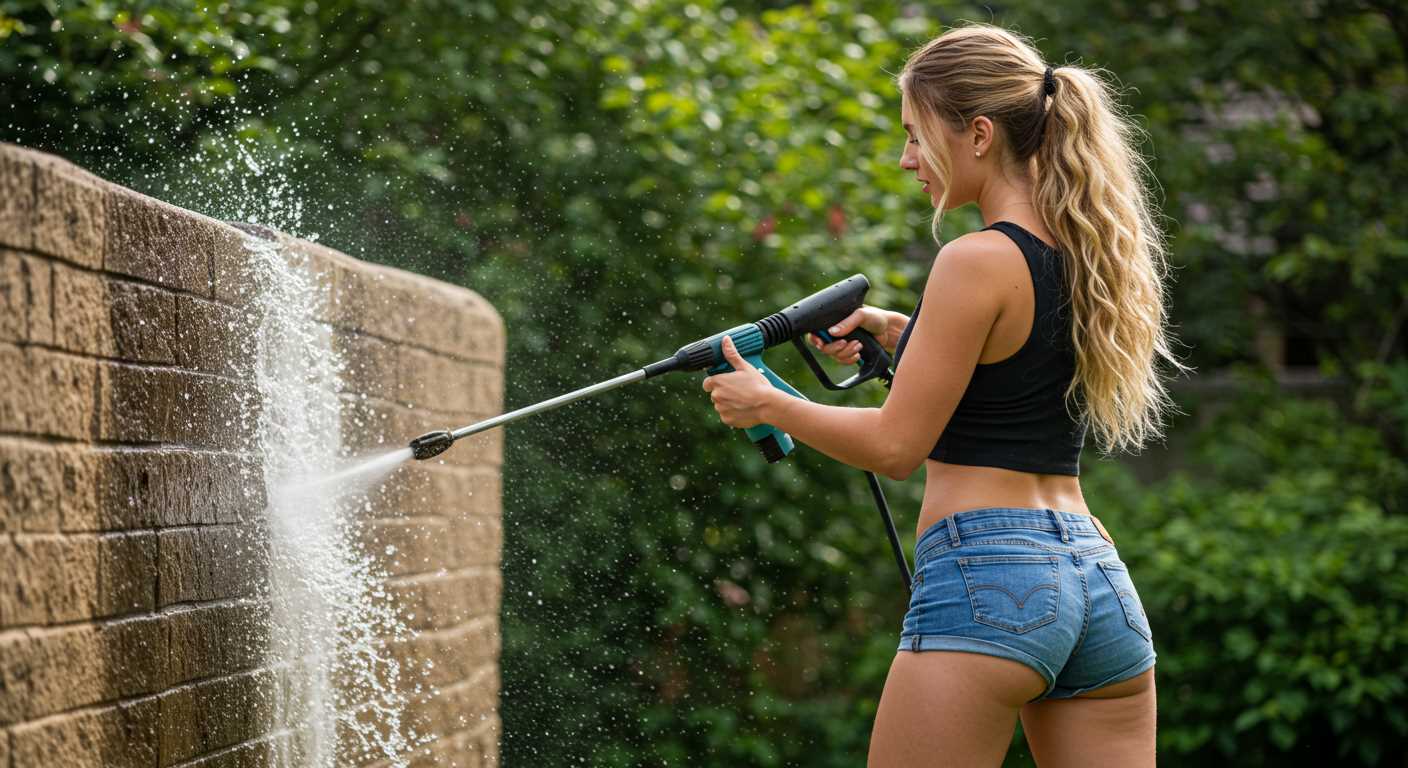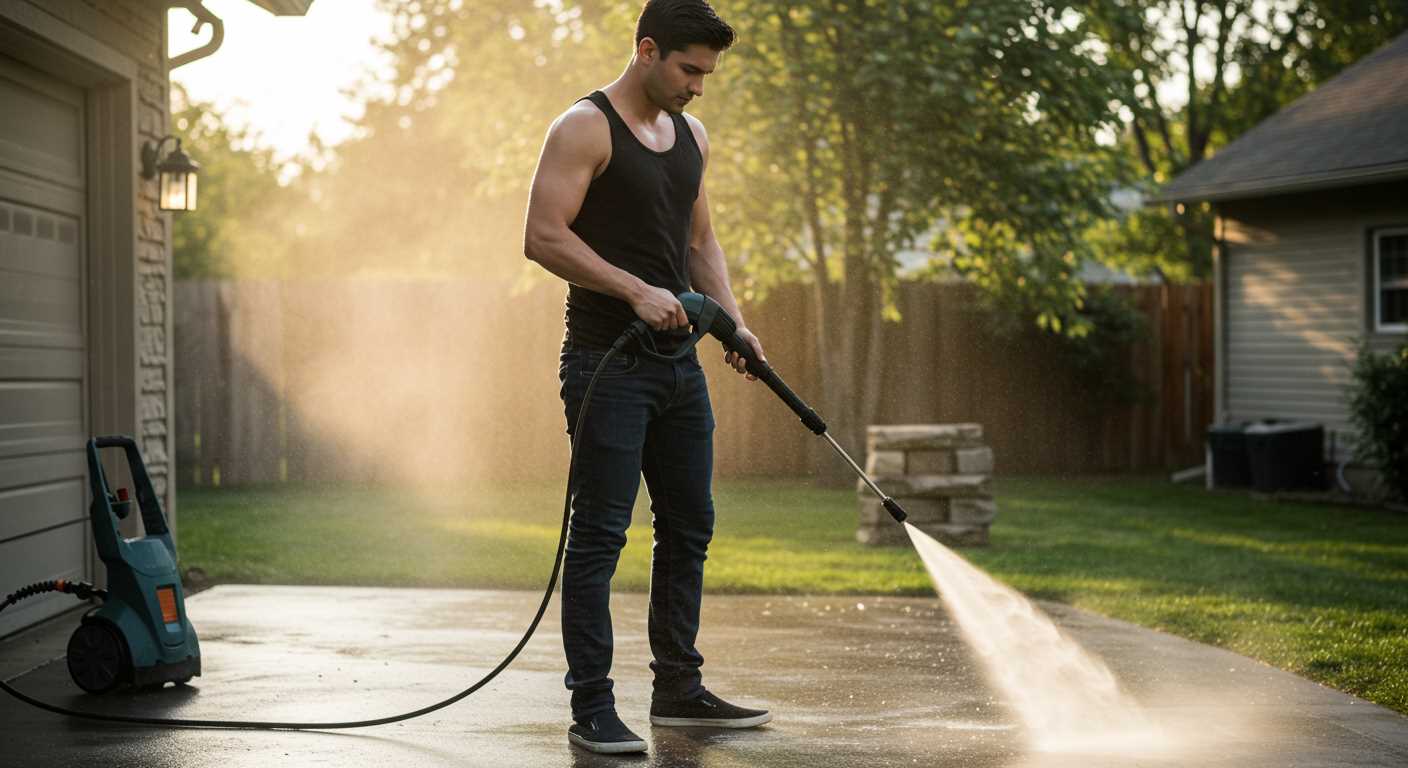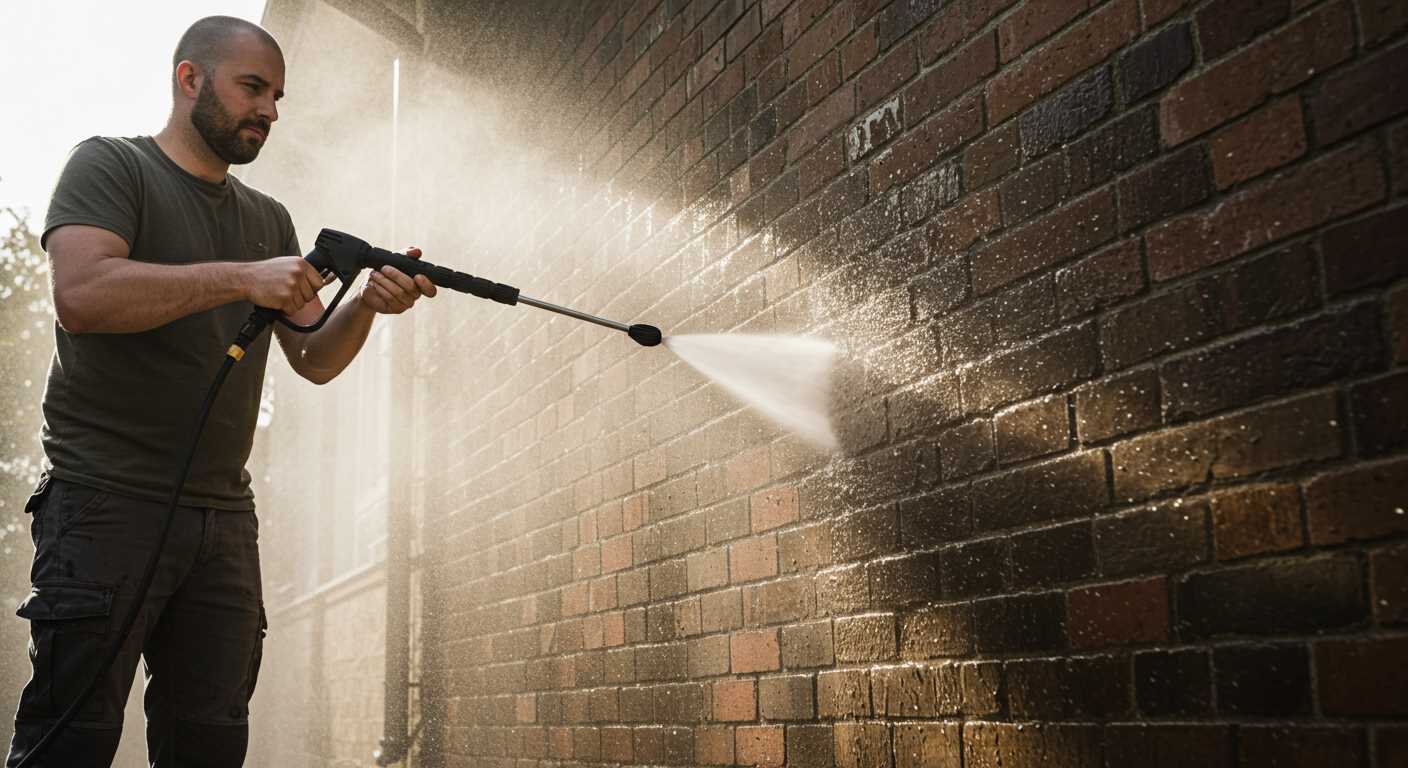



Choosing nozzles carefully can significantly enhance performance even in circumstances of inadequate flow. A wider nozzle reduces the intensity of the stream, which can help maintain adequate cleaning ability while optimising the available supply. Consider going for a 25-degree or 40-degree nozzle, as they offer a broader spray pattern, distributing water more effectively across surfaces while using less force.
Another technique involves altering your technique during application. Maintaining a consistent distance from the surface ensures that the force is not lost. Staying closer (but not too close) allows the stream to maintain its effectiveness without overwhelming the surface or causing damage. Make sure to move at a steady pace to achieve uniform results.
Additives designed for cleaning can enhance the efficiency of the system when supply is lacking. Using specific detergents or cleaning solutions can aid in loosening grime and dirt, reducing the reliance on water alone for powerful cleaning action. However, pre-diluting these products is often necessary to prevent clogging and maintain proper flow.
Lastly, consider utilising a water tank if regular supply is sporadic. This method allows you to store an adequate volume, ensuring consistent access during your tasks. A tank can serve as a reservoir to keep the system operating smoothly, making it more effective regardless of current flow rates.
Understanding Low Water Pressure Challenges
Ensure the inlet filter is clear to achieve optimal flow. Sediment buildup can significantly reduce intake efficiency, leading to inadequate performance. Regular checks are advisable to maintain consistent operation.
Avoid long hoses; instead, opt for shorter connections to minimise friction losses and ensure maximum flow. Each additional metre of hose can diminish available force considerably, impacting the cleaning capability of your equipment.
Identifying Water Source Limitations
Assessing your water supply’s ability to deliver sufficient volume is critical. If your system is shared with other users, timing your tasks to avoid peak usage times can help maintain adequate flow. Additionally, investing in a larger storage tank can provide a more stable supply during operation.
Adjustments for Enhanced Performance

Modifying the nozzle size can improve effectiveness. A wider spray pattern may compensate for reduced force by covering more area, though careful attention to cleaning needs is necessary. Regularly maintain your equipment parts to avoid performance drops caused by wear and tear.
Selecting the Right Nozzle for Your Pressure Washer
Choosing the appropriate nozzle is critical for maximising effectiveness while cleaning surfaces. The range of nozzle types can greatly influence the outcome, especially under conditions of inadequate supply.
For tasks requiring extensive cleaning, the 0-degree nozzle offers a concentrated jet, perfect for removing stubborn stains from concrete or brick. However, be cautious; its intensity can damage softer surfaces.
If gentler cleaning is necessary, the 25-degree nozzle is ideal. This option provides a wider spray pattern that efficiently cleans patios and decks without the risk of surface harm.
For tougher, grimy areas such as vehicles or outdoor furniture, the 15-degree nozzle strikes a balanced approach. It offers more power than the 25-degree variant but remains mindful of sensitive materials.
Moreover, the soap nozzle, often identified by its distinct shape and yellow colour, allows for effective application of detergent. This attachment optimally mixes soap with water, enhancing your cleaning regimen.
Utilising multiple nozzles can boost versatility. I recommend experimenting with different options to ascertain which suits your specific cleaning scenario. Assessing nozzle performance against surface types and grime levels ensures superior results.
Ultimately, having a selection at hand allows for tailored solutions, significantly overcoming challenges posed by limited supply. Investing in a variety of nozzles proves beneficial for maintaining a clean environment.
Preparing the Area Before You Start Washing
Clear the surface of any debris, including leaves, stones, and dirt. This will prevent obstacles from blocking the cleaning process and damaging the equipment.
Remove furniture, vehicles, or any items that may hinder access to the area being cleaned. If necessary, cover plants, windows, and other surfaces prone to damage using tarps or plastic sheeting.
Identify any sensitive spots or surfaces, such as wood, painted areas, or delicate fixtures. Use painter’s tape to protect them from unintentional splatter or oversight during the task.
Inspect the ground for potential hazards, such as uneven terrain or cracks. Ensure the area is safe and stable, reducing the risk of slips and falls. If working on a slope, secure your stance to maintain balance.
- Gather all necessary equipment, including extension cords, hoses, and clean-up materials.
- Check the cleaning solution compatibility with the chosen equipment.
- Plan your approach: start from the highest point and move downwards.
Ensure you have a firm grip on the machine and maintain a comfortable working distance. Regularly check the area for hidden hazards throughout the washing process.
Lastly, adjust the flow of cleaning solution if applicable, testing it on inconspicuous areas first to prevent damage. These steps prior to commencing will facilitate a smoother, more effective cleaning experience.
Adjusting Pressure Settings for Optimal Performance
For optimal cleaning results, adjusting the output force on your equipment is key. Set the machine to a lower intensity if faced with delicate surfaces. This prevents damage while still achieving effective cleaning.
Another tip is to gradually increase the intensity once the initial layer of grime is removed. This method allows you to tackle stubborn stains more efficiently without risking harm to the underlying surface. Always test the output on a small, inconspicuous area first.
Monitoring Temperature and Water Flow
Be mindful of the water temperature. Warmer water enhances the cleaning process, especially when dealing with oil or grease. Ensure the inlet has adequate flow; a consistent supply boosts overall effectiveness and protects internal components from overheating.
Utilising Adjustable Settings
If available, leverage variable output settings. Starting at a lower grade and adjusting as needed lets you find the optimal balance between cleaning power and safety for the material being treated. This step is particularly significant for areas that may suffer from excessive wear.
Keeping an eye on the gauge during operation can help maintain consistent performance. If you notice fluctuations, check for blockages or restrictions that may be affecting the flow.
Using Soap and Cleaning Solutions Strategically
For optimal results, selecting the right cleaning solution can significantly impact performance during cleaning tasks. Choose a soap that is specifically formulated for your equipment; this ensures compatibility and effective action against stubborn dirt. Avoid using regular soaps or detergents that may create excessive foam or residue.
Dilution for Enhanced Effectiveness

Concentrated cleaning agents often require dilution. Follow manufacturer instructions for the correct ratio to avoid clogging nozzles while ensuring adequate cleaning power. Test the diluted solution on a small inconspicuous area first to gauge its impact on surfaces.
Application Techniques
To maximise cleaning efficacy, apply soap using a low-pressure setting initially, allowing the solution to adhere and penetrate grime before switching to a more forceful setting to rinse away the residue. Be mindful of the dwell time; let the soap sit for a few minutes but avoid letting it dry, as this can lead to unsatisfactory results.
Techniques for Cleaning Different Surfaces
For concrete surfaces, employ a fan-pattern nozzle and maintain a distance of 12 inches. This prevents surface damage while effectively removing dirt and stains. Begin from the highest point and work downward to ensure runoff cleans lower areas.
When tackling wooden decks or fences, utilize a wide angle nozzle, typically around 40 degrees. To avoid splintering, keep the nozzle at least 18 inches away. Move in the direction of the wood grain for optimal results, and consider a lower setting to minimise any potential harm.
For vehicles, opt for a soap-dispensing attachment combined with a low-pressure nozzle. Apply detergents from the bottom up to avoid streaks, rinsing from the top down to ensure all residue is cleared away. Ensure the nozzle is held at least two feet away to prevent damage to paintwork.
Brick surfaces require careful consideration; use a rotating nozzle for stubborn grime while maintaining a safe distance. Test a small, inconspicuous area first to assess how the surface reacts before proceeding.
Glass surfaces, like patio doors, benefit from a gentle touch. A 25-degree nozzle works well, keeping the tip at least 24 inches away. A direct spray could lead to breakage or shattering, so focus on a sweeping motion.
For garden furniture, particularly plastic or resin, a 40-degree nozzle can restore brightness without scratching. Test a small area and adjust distance based on material sensitivity to get the best finish.
For outdoor equipment, switch to a concentrated jet nozzle to eliminate grease and grime without soaking components. Use a brush attachment for scrubbing stubborn areas while maintaining a safe distance to avoid damage.
Maintaining Your Machine for Optimal Performance
Regular upkeep plays a significant role in ensuring that the unit operates smoothly, especially in conditions where available hydration is minimal. Begin by checking the filter; a clean filter allows for better suction and efficiency. Rinse or replace it as necessary.
Inspect hoses and connections for any leaks or blockages. Any vulnerability in the system can lead to diminished output. Tighten connections and replace damaged hoses immediately.
Routine flushing of the pump with a mild solution can prevent sediment build-up. Avoid harsh chemicals that may corrode internal components. Instead, a gentle detergent solution can enhance cleaning capability without causing harm.
Oil Maintenance
Regularly check the oil level in the motor. If it’s low, replace it with the manufacturer-recommended type. Clean oil ensures smooth operation and prevents overheating during prolonged tasks.
Storage Practices
When not in use, store the equipment in a dry, sheltered area to protect it from the elements. Add a stabiliser to the fuel if it’s gasoline-powered, ensuring it remains operational when needed again.
| Task | Frequency | Notes |
|---|---|---|
| Check filter | Monthly | Replace if dirty |
| Inspect hoses | Every use | Patching or replacement as needed |
| Flush with mild solution | After each use | Use non-corrosive cleaners |
| Check oil level | Monthly | Replace with recommended type |
| Store properly | After each use | Use stabiliser for gasoline models |
By adhering to these maintenance tasks, you will keep your equipment running effectively, ensuring that it performs well under various conditions, particularly where moisture is scarce.
Troubleshooting Common Issues While Washing

Encountering difficulties is common during outdoor cleaning tasks. Here’s a list of typical problems and their solutions:
-
Inconsistent Cleaning Power: Check for clogs in the hose or nozzle. Remove debris and clear any blockages. A clean spray nozzle optimises the flow of fluid.
-
Hose Kinks or Twists: Inspect the hose for kinks that can impede flow. Straighten it out before beginning your session. Ensure it lies flat to maintain a steady supply.
-
Foam Not Lathering Properly: If soap isn’t foaming adequately, verify the mixing ratio. Use the correct amount of detergent and ensure it’s designed for this type of equipment.
-
Equipment Shaking or Vibrating: This could indicate an air blockage. Inspect all connections to ensure they are tight. Bleeding the lines to release trapped air can alleviate vibrations.
-
Leaks at Connections: Examine all fittings and connectors for signs of wear. Tightening connections or replacing gaskets can resolve leaking issues effectively.
-
Surfaces Not Getting Cleaned: Adapt the spray angle and distance. Keeping a consistent distance of about 30cm from the surface allows for optimal cleaning without causing damage.
-
Unit Not Starting: Verify that all safety features are engaged and that the power source is working. A quick reset of the system can sometimes restore functionality.
Testing various methods can lead to discovering effective solutions. Pay close attention to the equipment’s condition and surrounding environment, as these factors significantly impact performance.







